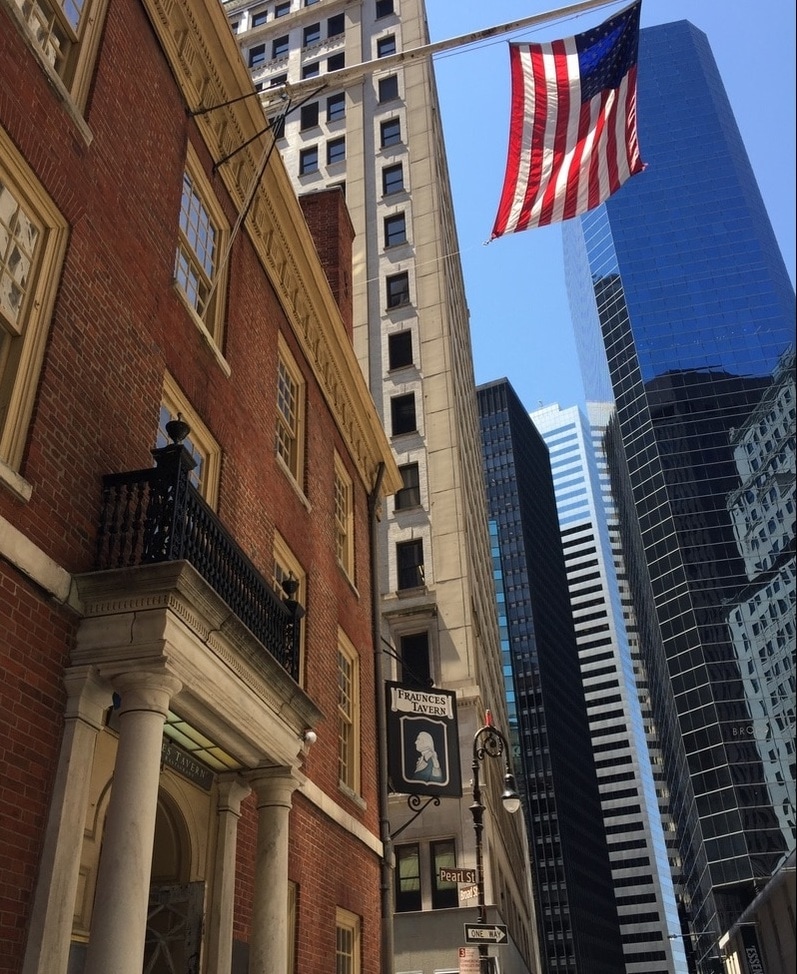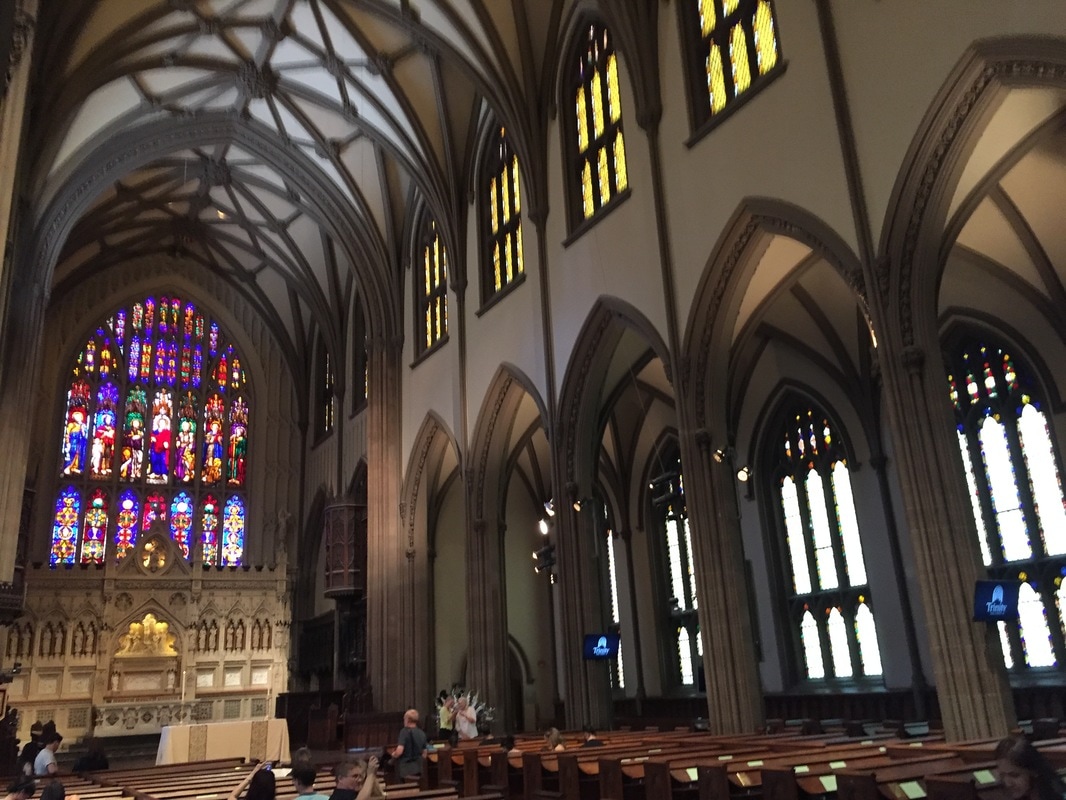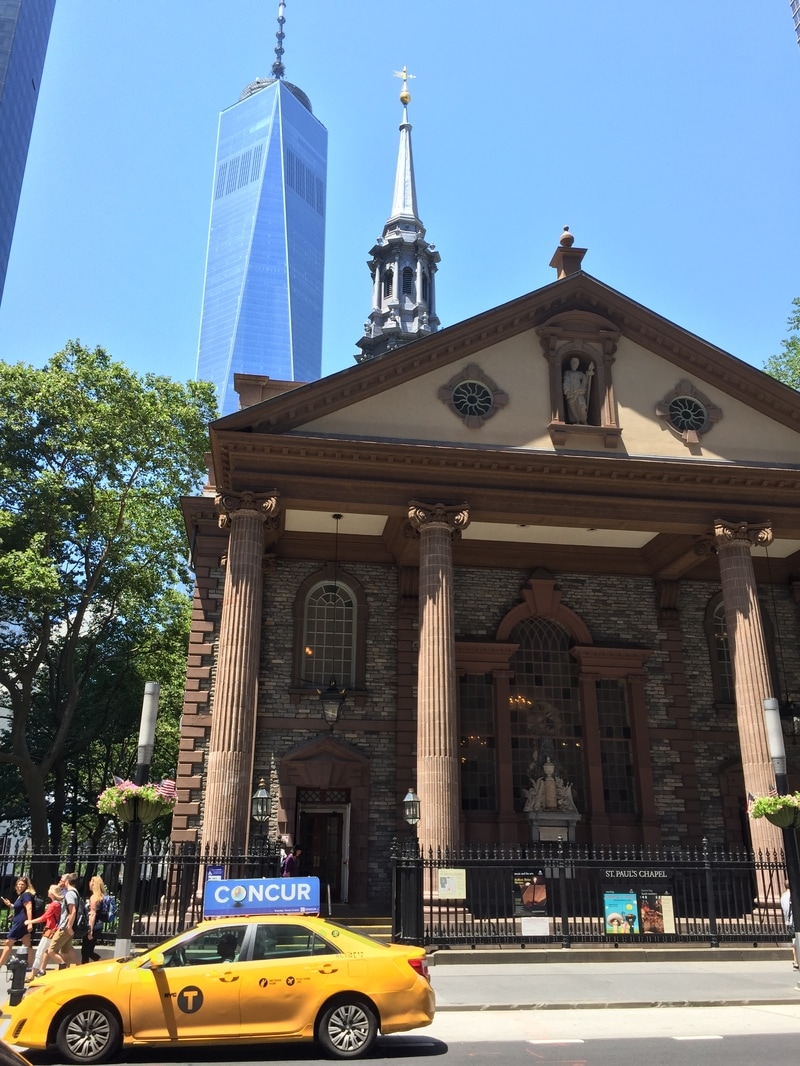SummaryThe 4th of July is one of the most important dates in American history as it celebrates America's Declaration of Independence from the British Empire. It leaves me slightly confused; there's my British upbringing that makes me want to shout treason, but there's my Panjabi heritage that thinks, 'you did good America'. July 4th, or Independence Day, is a time of being with your family and therefore there is an exodus from the city the weekend before. In fact, I did a day trip to Long Island on the Friday before, and the traffic leaving the city throughout the day was incredible. For me, July 4th was the perfect opportunity to see how New York City celebrated one of the biggest days in the American calendar. One man's freedom fighter...Other than zebra's and zebra crossings, nothing is ever black and white. The American Revolution is a strange thing for a non-American to look at and you can take one of two approaches. The first approach is looking at this as a group of downtrodden people fighting for their freedom against an oppressive and tyrannical regime. These determined patriots took on, and defeated, the largest Empire the world had ever seen despite having no professional army at the outbreak of the war. The Sikhs have a parallel to that, and that is the fight against the Mughal Empire some 50 years earlier. The second approach is to look at this as a small group of violent extremists who, unhappy with the way the country was being run decided against normal peaceful protests or using the judicial system, but attacked their legitimate government. This despite protests from moderates within their community to find a peaceful resolution. It just goes to show the importance of having the power and independence to frame your own narrative. The truth I suspect, is somewhere in between. The UK at this time was a leading proponent of Mercantilism, an economic system that emphasised the importance of accumulating material wealth at the expense of other nations. To achieve this, the UK set out to gain new markets for its products, whilst stripping the wealth of a territory and repatriating it back to Britain. The mechanisms for succeeding in this system demanded an aggressive nation-state, and this led to numerous atrocities being committed by all colonial nations in pursuit of greed and growth. The UK has definitely committed a large number of atrocities in its pursuit of economic growth and political power and its treatment of Americans, whilst not the worst (see Jalianwala Bagh, or Boer concentration camps), was harsh enough to create an environment ripe for a revolution. The United States at this time, was another market for British goods. However, a number of enlightened individuals in the Thirteen Colonies demanded more equality in the relationship; "no taxation without representation" being their most famous demand. There is no doubt that these patriots felt they were fighting for a worthy cause and history has judged them to be correct. Furthermore, their early independence allowed Americans to pursue their own destinies and gave them an opportunity to flourish, something that may have taken considerably longer under British rule. If you don't believe me, look at Canada, Australia and India, all nations that did not get their independence for at least 150 more years, and all nations who grew much more slowly in terms of their economy due to the focus on transferring wealth to the UK. But that doesn't mean the patriots were entirely faultless. Having attacked the legitimate government of the day meant that should they have lost the war, they would have been seen as nothing more than violent extremists, and perhaps worse, labelled terrorists. This is even more true in New York, which was a loyalist city. The city wanted to remain a part of the British Empire, but this small group of patriots (or extremists, depending on your perspective) went against the wishes of the majority peace loving moderates. It's funny how history can change the use of words that describes a situation, depending on who wins. Furthermore, it wasn't just a group of rag-tag militiamen who took on Britain, it was a coalition of nations. The French, Dutch and Spanish all armed and assisted the nascent country, and the French in particular took part in a number of battles and helped change the tide of the war. In fact, I was surprised to see the French role being downplayed and sometimes, ignored. Finally, race plays a part. The European descended Americans had the support of Britain's European rivals. British public opinion was also divided at the start of the war but turned against Britain by the wars end forcing an end to hostilities. Furthermore, the British Prime Minister himself gave the newly independent nation more land than the Americans had asked for, reasoning that it would allow the Americans to grow and therefore give the British a larger export market. Australia and Canada also managed to become self governing colonies once it became clear that they would provide more economic benefits as independent nations than they would as colonies (with the cost of defence, upkeep etc). The Indian Subcontinent and Africa however were not so lucky. Public opinion in the UK never forced the governments hand as these were deemed lesser human beings who needed to be civilised. The British Government itself would tie up any Sikh patriots (or extremists) to cannons and blow them to pieces, a form of punishment considered too extreme to use on fellow European descended colonists. That being said, you have to admire the tenacity, optimism and belief of the early Americans. They had ideals, and more importantly they had people willing to fight and die for these ideals. On the whole, their leaders and soldiers weren't tempted by greed (unlike the Sikh aristocracy in 1849) and independence was most important. They managed to successfully do what many other nations failed to do (see European revolutions of 1848, Second Anglo-Sikh War, Indian Mutiny, Boer War etc.) In fact, most impressive of all is the stable government that the Americans managed to form (not withstanding the later civil war). Whilst almost all newly independent countries in South America, Africa and parts of Asia struggled to find their correct political system post independence, the Americans managed it quickly and it gave them the springboard to grow at a rapid pace. Another thing that has impressed me is the way the American's failed to play into classic divide and rule strategies. The British Empire had a fantastic tactic of drawing random lines in places to divide people and these lines have led to nothing but bloodshed. They drew a line between India and Pakistan (right through the Sikh homeland) that led to three wars and constant tension, lines in the Middle East have created large problems to this day, even in Ireland, the drawing of a line saw a generation of civilians live through bombing campaigns. A line was also drawn in North America between the new United States, and British North America (Canada). On the whole, this line has been peaceful. The United States made one concerted effort to invade its northern neighbour, but it was repulsed by the British in 1812. Other than the failed assaults of the Fenians in the 1860's, a group of American Irish Republicans who were supported by the US Government, the US has managed a peaceful coexistence with its neighbours and this peace has led to prosperity through increased trade. Federal HallI began the day with a short walk to Federal Hall at the cross section of Wall Street and Broad Street. The building was the site of the an important case in colonial America that established freedom of the press, and it was also the meeting point of delegates from the different colonies who demanded the same rights for Americans as British subjects in the UK. Following the Revolutionary War, Federal Hall served as the first US Capitol and a number of important Acts were passed within its walls. It was also the building from which George Washington was inaugurated as the first US President. Unfortunately, as with many building in New York at the time, historical preservation was not high on the American agenda, and the building was razed to the ground in 1812. The current building dates to 1842 when it was rebuilt as the US Customs House for the Port of New York. It wasn't until 1939 that the building came into its present use as a memorial site. The classical style of the building reflects republican ideals of the day and is similar to Greco-Roman types of buildings. Its not particularly large, but the rotunda room is quite spectacular. I had a walk around and saw colonial era re-enactments including hearing a reading of the Declaration of Independence from 'George Washington', Another positive was that unlike other museums in New York, this one was free. Fraunces TavernMy next stop was Fraunces Tavern, The building is a mixed use bar, restaurant and museum and was the site of a number of important historical moments. In the lead up the Revolution, the Tavern was seen as 'patriot friendly' and therefore hosted leading rebels of the time. Following the Revolution, it was the scene of a number of negotiations. The British argued that free African Americans that they had emancipated to help fight the Americans should remain free and have the choice to leave with the British - the Americans were against this idea, something that taints the "all men are born free" motto the patriots fought under. Eventually, the British got their way and ensured most free African Americans retained their liberty. Not that it paints the British in a great light, as they were guilty of facilitating the slave trade during their rule and only gave emancipation in return for conscription. The Tavern also hosted George Washington's final meeting with officers from the Continental Army. As with Federal Hall, the Tavern has been rebuilt on a number of occasions (although never completely razed) and therefore the look of the original building is unknown. Still, entry was subsidised for the day and was only $1 as opposed to the usual $7, and after eating some food I was very surprised with how large the upstairs museum was. It contained a great number of paintings depicting the Revolutionary War as well as flags of the time, and the Tavern as it would have looked during the colonial era. If you find yourself in the financial district during a trip to New York, Fraunces Tavern is well worth the visit. The two churchesNext on my July 4th list were the two oldest churches in New York, Trinity and St Pauls. The history of Trinity Church dates back to 1698 and colonial era paintings of the time show it dominating the New York skyline, although it is dwarfed on all sides from the World Trade Centre complex and the high rises of the financial district and Wall Street, which it directly overlooks. I found this slightly poetic, at one point Trinity Church was the most important thing for New Yorkers and faith ruled, at another time Wall Street was the most important thing as money ruled. As with the other buildings, the present building isn't the first, nor even the second iteration of the church, but the third, completed in 1846. Again, I was surprised to find out that the original church was actually destroyed by American patriots when the city was held under British rule as part of the Great Fire of New York, an act of arson committed by the Americans that is often overlooked when speaking of the Revolutionary War. In all honesty, I've passed this church hundreds of times during my stay in New York and I love everything about it. It looks like a building frozen in time as the world around it has changed. It was the building where individuals like George Washington worshipped. A walk through the cemetery is also relaxing, the most famous tomb in the ground belongs to Alexander Hamilton, one of the founding fathers. St Pauls Chapel is a short walk north on Broadway and although built after the original Trinity Church, it is the oldest extant original church in Manhattan. When the church was built, it was the tallest in New York, but as with Trinity it is dwarfed by its surroundings, especially the Freedom Tower, which stands directly behind it. Inside, the church was much smaller than Trinity, deceptively small actually, but it had a cemetery behind it you can walk through that is a welcome distraction from the busy roads around it. The Empire StateI've made it a point to do and see as much as I can in New York and I've seen pretty much all the famous landmarks, the only one that I hadn't seen was the view from the top of the Empire State Building. There was a good reason for this. Having been to the Top of the Rock, arguably the best high rise view of the city, I figured there was no need to go to Empire State Building. Plus, if I was inside the Empire State Building, well then that means I wouldn't be able to see the most famous skyscraper of them all. A final reason was the infamous queue I'd heard about, it usually stretches for at least an hour. However, on July 4th, almost all locals leave the city and this meant the subways and streets around midtown were significantly quieter, and there was absolutely no queue to get to the observation deck. There were also a larger amount of homeless people, much more than usual (which is quite a lot as it is). I'm not sure if its due to the fact it was a holiday, but it makes you think about the wealth inequality prevalent here. At $35, it's fairly expensive but the view, especially of Lower Manhattan is very nice. However, the view from the Top of the Rock is significantly better, and if I had to choose, it would be no contest. That being said, what the Empire State Building offers is a fantastic view of the beautiful Chrysler Building.. FireworksNew York has the largest 4th of July fireworks in the country, with the Macy's sponsored show the largest in the city. I've been lucky enough to stay in a high rise apartment in Manhattan with a panoramic view of the entire city so I was able to not only see the main fireworks, but also fireworks in four of the five different boroughs; Brooklyn, Manhattan, Queens and Staten Island as well as the Hudson River and New Jersey.
I've never completely understood the fascination in fireworks. Almost all cultures use them, but I don't know, maybe its just me. In any case, it was pretty cool seeing the fireworks against the Manhattan backdrop and it gave me a chance to dwell on how big these celebrations are in America. It's amazing how this small settlement on the Atlantic Coast has transformed into the most powerful country in the world, and this small city of 25,000 at the end of the Revolutionary War is now one of the largest and richest cities in the world. In fact, it was interesting to see a statistic in St Paul's Chapel that showed that during the time New York had a population of 25,000 (and therefore was smaller than even Philadelphia), London had a population 30 times larger. It shows just how far this city, and the nation has come in its relatively short history. However, issues of homelessness, growing income disparity and a city with a political outlook significantly different from the heartlands of the America also show that the city, and the country is at somewhat of a crossroads and the next 240 odd years promise to be just as unpredictable as the last 240. Comments are closed.
|
AuthorBritish Sikh, born in the Midlands, based in London, travelling the world seeing new cultures. Categories
All
|








 RSS Feed
RSS Feed